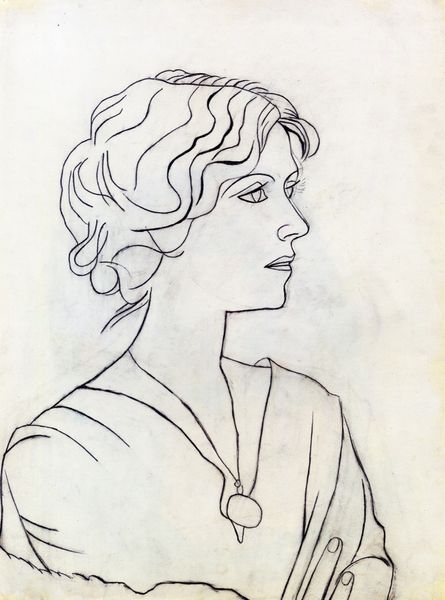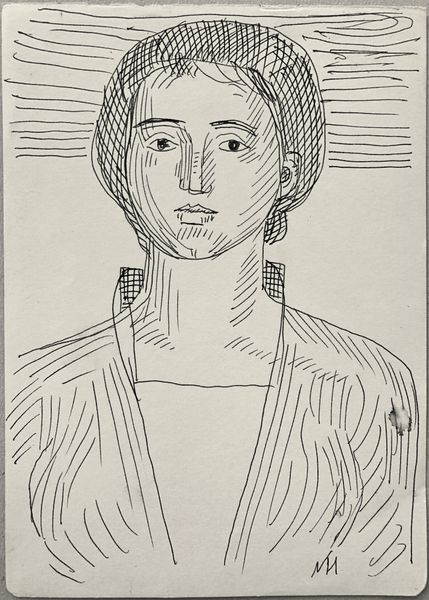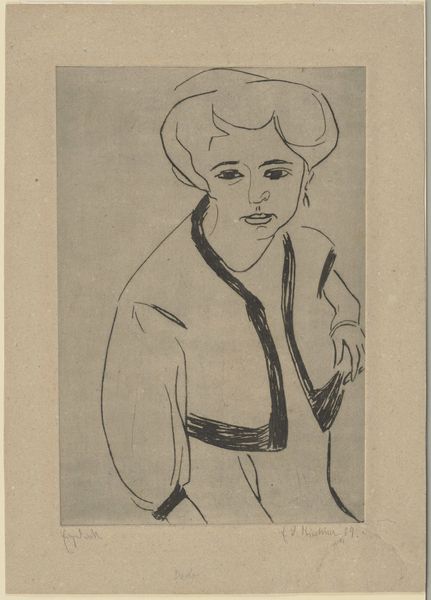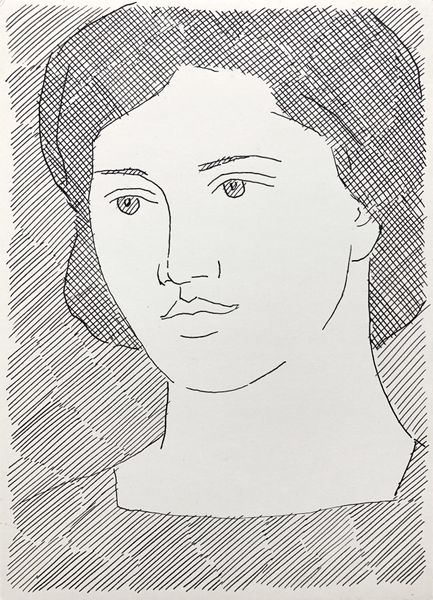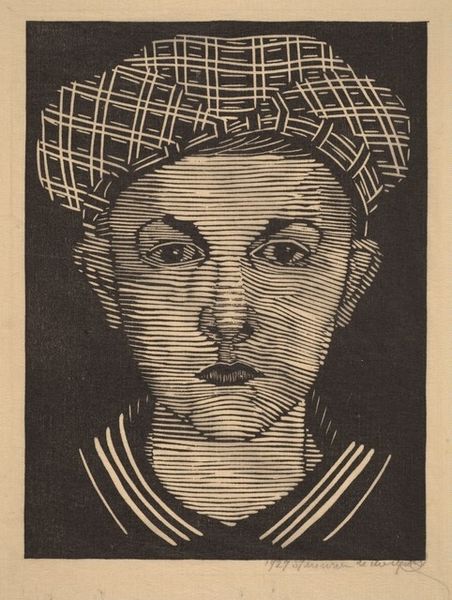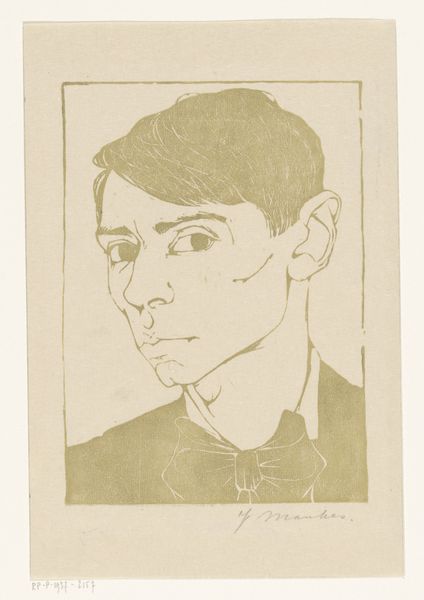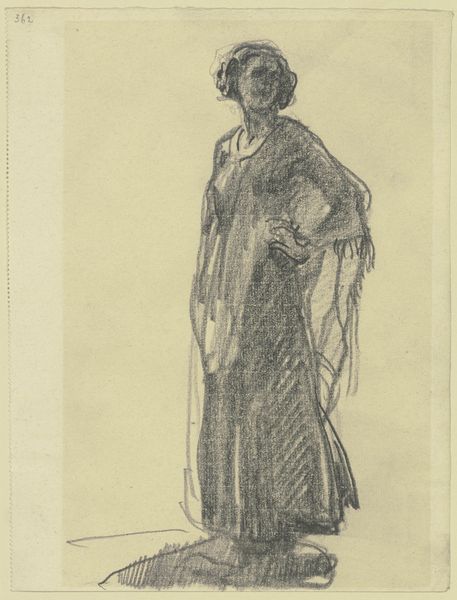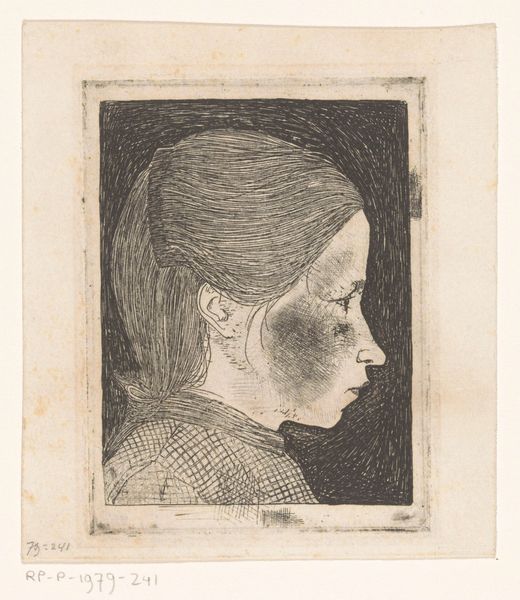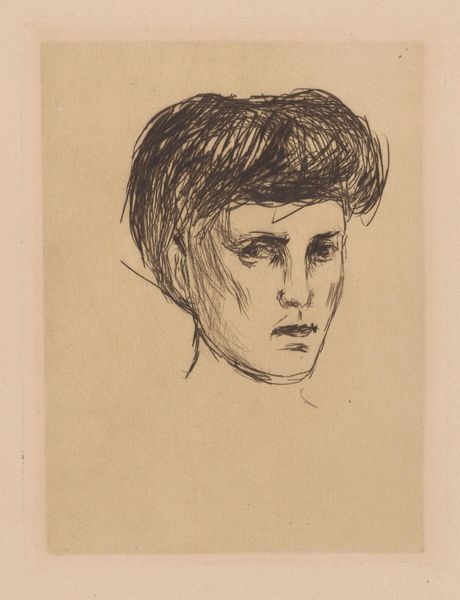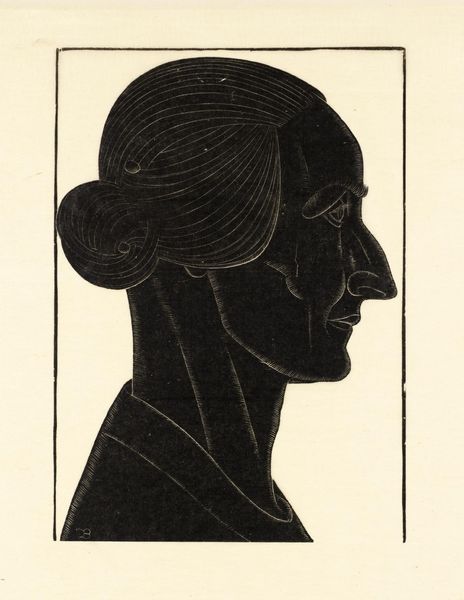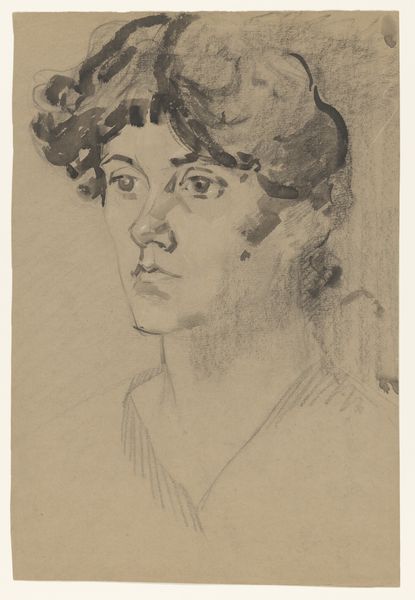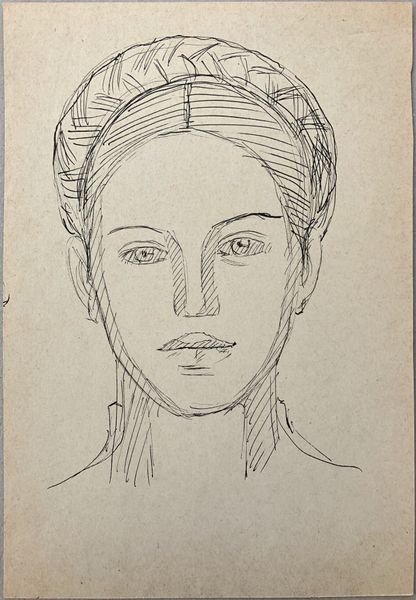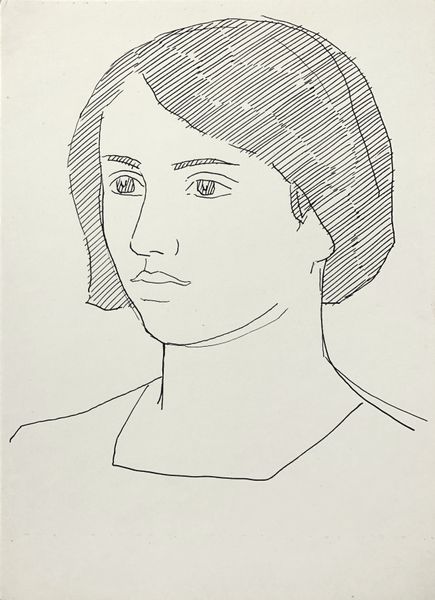
drawing
#
portrait
#
drawing
#
art-nouveau
#
caricature
#
line
#
portrait drawing
Dimensions: height 160 mm, width 142 mm
Copyright: Rijks Museum: Open Domain
Curator: Look at this arresting work. "Portret van een vrouw, van voren," or "Portrait of a Woman, Front View," by Julie de Graag, created sometime between 1887 and 1924. It's a drawing held here at the Rijksmuseum. Editor: Stark, isn't it? There’s a directness in that gaze that's almost confrontational. The lines are so precise, creating an almost graphic feel. Curator: Yes, let's consider the stark black lines. De Graag's line work is incredibly deliberate, creating distinct contrasts. You can really see the influence of Art Nouveau in her emphasis on the decorative qualities of line. The linear process itself gives the image its graphic quality. Editor: And look at the choices of representation. The direct frontal view positions her as a subject rather than an object. We have to think about this woman’s identity, or what the artist wants to show of that identity in her particular socio-political context. How does De Graag's identity as a woman artist in the early 20th century shape how she views and represents other women? Curator: That’s a brilliant question. Let’s not forget how the reproduction would work; these drawings could become prints, and widely disseminated. How do we consume this? How does it function in the popular media of the era? And what choices of labour led to it being printed versus being discarded? Editor: The question of the "original" and the copy is important, but so is what the portrait *does*—and perhaps *did*, circulated during a critical moment of burgeoning ideas about the "new woman". The symmetry and flatness flatten any depth or romanticism, emphasizing something far more direct. How subversive was that in terms of representing women during that period? What was at stake? Curator: We're left to consider the mechanics of line, reproduction and labor to understand not only the impact, but also the means that facilitated such subversive images in the early 20th century. It's not just the *what*, but very much the *how*. Editor: I’m captivated by the way she allows the face to tell a story of modern female representation that's rooted in questioning traditional roles, and so strongly defined. Curator: And to examine the drawing as both artifact and idea reveals how material conditions made a portrait such as this even possible. Editor: Absolutely. It prompts us to rethink the historical constraints of gender representation.
Comments
No comments
Be the first to comment and join the conversation on the ultimate creative platform.
